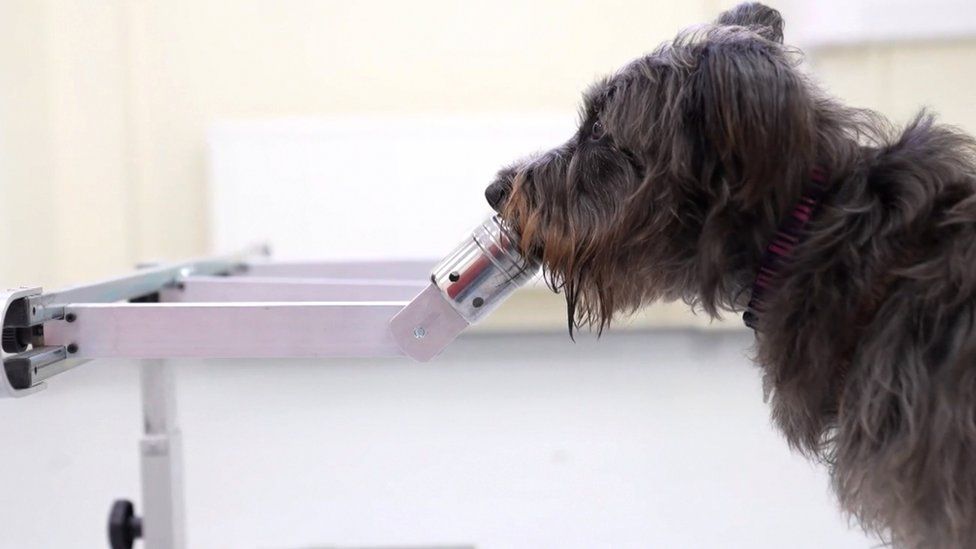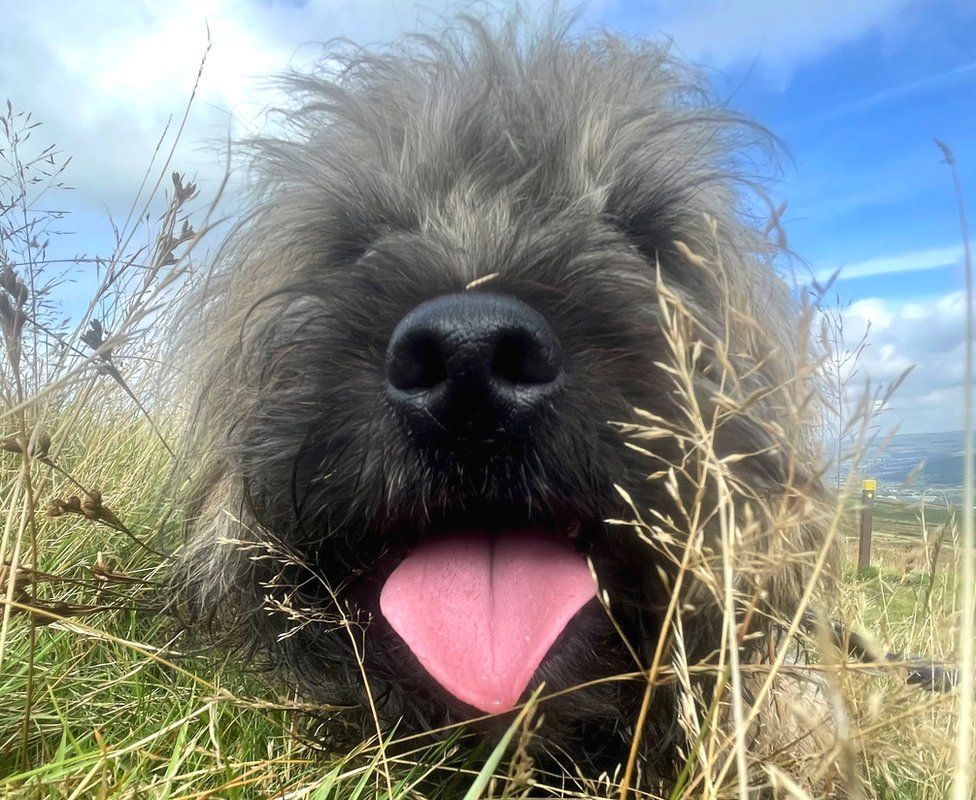From -BBC News,
By Victoria Gill,
Science correspondent,
Our canine companions have proven once again how finely tuned they are to our feelings - this time in scientific sniffing test.
Scientists discovered that dogs can smell stress in our breath and sweat.
Four dogs - pets volunteered by their owners - were trained to "choose" one of three scent canisters.
And in more than 650 out of 700 trials, they successfully identified a sample of sweat or breath that had been taken from a stressed person.
The researchers, at Queen's University Belfast, hope their study, published in the journal Plos One, will help in the training of therapy dogs.
Dogs experience their world through smell. And their highly sensitive scent-detection abilities are already used to detect drugs, explosives, and illnesses, including certain cancers, diabetes and even Covid.
"We had lots of evidence that dogs can pick up smells from humans that are associated with certain medical conditions or disease - but we don't have much evidence that they can smell differences in our psychological state," lead researcher Clara Wilson said.
The 36 human volunteers reported their stress levels before and after completing a difficult maths problem.
Each can contained a sample of their sweat or breath from before or - as long as their blood pressure and heart rate had also increased - after.
And if the dogs, Treo, Fingal, Soot and Winnie, stood still or sat in front of the "stressed" sample, they were rewarded with a favourite dog treat.


Comments
Post a Comment